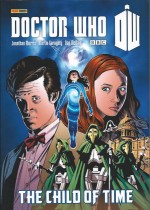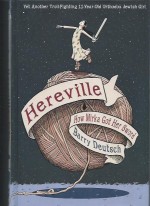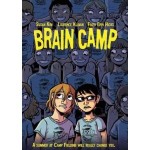
By Anthony Horowitz, adapted by Antony Johnston, Kanako & Yuzuru (Walker Books)
ISBN: 978-1-4063-1877-7
Win’s Christmas Gift Recommendation: Ignore the telly for once and get your postprandial Yuletide blockbuster hit from this superb comics classic… 8/10
One of the most thrilling and effective additions to Britain’s pantheon of spies and detectives in recent years is no hard-hearted and suavely mature super-agent but a conflicted yet ultimately indomitable English teenager, more worried about daily drudgery and bouts of lessons-induced coma than espionage and the end of civilisation as we adults know it…
In 2000 author and TV screenwriter Anthony Horowitz released Stormbreaker, the first of nine (and counting…) breathtaking, rollicking teen novels featuring 14-year old Alex Rider: a smart, fit, sports-mad lad like any other, who suddenly discovers that his guardian Uncle Ian had been keeping incredible secrets from his only kin…
After a dull English lesson and a tense schoolyard dalliance between the boy and classmate-of-his-dreams Sabina Pleasure inBrooklandSchool,London, the all-out action begins with a spectacular chase inCornwall as a desperate man in a tricked-up sports car desperately fights to avoid high speed death. It’s a futile effort: his dogged pursuers are on motor bikes and in helicopters and, in the midst of a hail of bullets and missiles, the quarry takes time out to call his nephew Alex and apologize for letting him down again.
It’s the last call Uncle Ian will ever make…
Returning to his Chelseahome Alex Rider is greeted by his eccentric Katana-wielding housekeeper Jack Starbright. She’s made sushi and thinks she’s perfected the recipe for fugu. Alex hopes so: Puffer fish is one of the deadliest poisons known to man…
The meal is interrupted by the police with some bad news…
At the funeral, staff from the private bank Ian Rider worked for tender their condolences but they’re like no businessmen Alex has ever seen, and when he and Ms. Starbright return to the flat they find workmen moving the last of Ian’s possessions into a van. Without thinking the furious schoolboy gives chase on his pedal-bike and the breakneck pursuit leads to an excessively secure junk yard inSouth Londonwhere Alex sees all his uncle’s stuff being destroyed. When the boy examines the soon to be crushed car he finds bullets holes and an ejector seat, but is trapped when the vehicle is dropped into a mechanical crusher.
Spectacularly escaping, he is then chased by gun-firing goons. Fighting his way clear the boy follows a lead to Liverpool Street Station and is lured, all unsuspecting, to a secret high-tech installation beneath the busy railway terminus.
Alex is greeted by the efficient Mrs Jones and her supercilious superior Mr. Blunt who reveal the incredible truth. Ian Rider was a secret agent working for MI6 and murdered in the line of duty. Moreover, the deceased super-spy had been surreptitiously teaching his nephew all the skills, techniques and disciplines needed to become a secret agent – and his successor…
When Blunt’s far-from-subtle hints that Alex should join up are hotly rejected, the Machiavellian spymaster resorts to blackmail and threatens to revoke Ms. Starbright’s visa and have her deported.
Soon Alex is training with an elite military unit inWalesand quickly distinguishes himself as someone with unique problem-solving capabilities and a knack for improvisation.
The case Ian was working on is still active. Mysterious billionaire philanthropist Darrius Sayle is a Man of the People, friend of the Prime Minister and about to donate one of his new Stormbreaker personal computers to every school inBritain. But Alex’s uncle was investigating Sayle’sCornwall factory/mine complex when he was killed and the agent’s last message warned of a virus. Now Blunt wants to send Alex in as a computer nerd competition winner to scope out the nature of the threat…
Alex’s grim, enforced resignation is briefly lifted when he is sent to a toyshop to pick up a batch of high-tech gadgets from ingenious and affable MI6 quartermaster Mr. Smithers, after which it’s all stations go and “Kevin Blake†is packed off to isolated South West village Port Tallon.
He is met by Sayle’s ferocious and formidable PA Nadia Vole and escorted deep into the depths of a facility that looks more like an army base than a factory. The billionaire himself is a creepy blend of Tim Curry and Richard Branson, and his other assistant – mute failed circus knife-thrower Mr. Grin – looks like a fugitive from a horror film…
Soon “Kevin†is experiencing the full incredible power and range of the virtual realities produced by Stormbreaker kit, but his unsanctioned investigations soon uncover an unspecified secondary purpose for the schools-destined computers…
After being caught wandering “lost†in the bowels of the installation, Alex has an effusive dinner chat with American ex-pat Sayle, unaware that Ms. Vole has tracked his origins and is currently attempting to murder Jack Starbright…
Later that night in Cornwall Alex spies on a conversation between Sayle and a lethal-looking Russian named Yassen Gregorovitch and, unaware that he has been compromised, sneaks into the deepest levels of the factory and uncovers a lab modifying a biological – not digital – virus to be hidden inside every free computer destined for the nation’s classrooms…
Confronted by Gregorovitch who nonchalantly admits to killing his uncle, the boy manages to escape but is swiftly recaptured and left to die in a tank of deadly jellyfish as Sayle triumphantly flies off to London and the culmination of a petty, vindictive, genocidal vengeance scheme thirty years in the making…
Following a staggering spectacular chase back to London, Alex, with only his unlucky amour Sabina to assist him, invades the Stormbreaker launch and dramatically prevents the virus from being released. On the roof ofLondon’s tallest skyscraper they clash with the bonkers billionaire in a brutal and extremely final confrontation before the madman meets his deserved doom from a most unexpected and bewilderingly unlikely source…
With the drama done with, the stunned and shaken kids return to school, but the shadowy worlds of tradecraft and spymasters are not done with Alex Rider just yet…
This adaptation is sharp and poignant, surely depicting the sense of loss and betrayal as Alex loses so much of his innocence amidst situations of breathtaking danger and nerve-tingling excitement.
Our popular literary heritage is littered with cunning sleuths and stealthy investigators from Sherlock Holmes and Dick Barton to the Scarlet Pimpernel, George Smiley, Harry Palmer and Bond – James Bond – but the ongoing adventures of boy-hero Alex Rider seem set fair to match them all in time.
Transformed into graphic novel interpretations, the first four adventures have been recently repackaged and re-released in larger, more graphic-friendly editions: their easy blend of action, invention, youthful rebellion and engaging James Bond pastiche perfectly captured in adaptations by writer Antony Johnston and manga artists (and sisters) Kanako Damerum & Yuzuru Takasaki.
They’re well worth further investigation, but remember: even though this is a notionally a children’s book there is a lot of realistic violence and a big body-count so if you intend sharing the book with younger children, read it yourself first.
These books and their comic counterparts are a fine addition to our fiction tradition. Alex Rider will return… and so should you.
Text and illustrations © 2006 Walker Books Ltd. Based on the original novel Stormbreaker © 2000 Stormbreaker Productions Ltd. All rights reserved.









